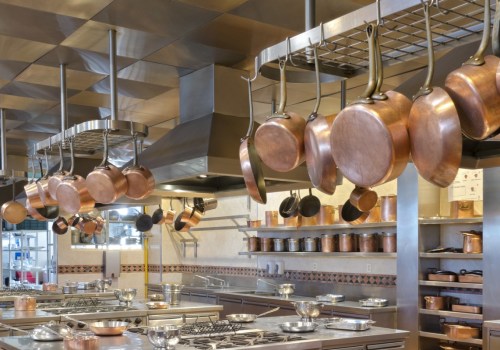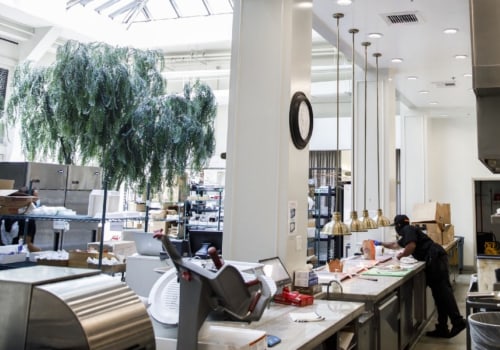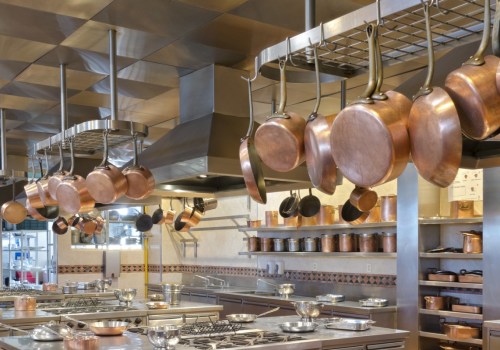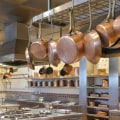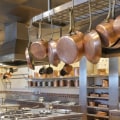Dollars and that figure is expected to reach 223 billion dollars in 2027.Ghost kitchens, which are usually remote spaces rented by existing restaurants to manage home and takeaway orders, aren't for everyone, but they can open up a new source of income, increase profits and gain more market share. Terri Bloomgarden, co-owner of Canter's Deli in the Fairfax neighborhood of downtown Los Angeles, says that traffic jams in the kitchen led her to open an external convenience store dedicated to home orders. Reaching a potential new market, downtown Los Angeles, was also considered. For Terri, the solution was the outdoor kitchen, but restaurants with larger kitchens and those currently operating with limited dining capacity may run out of food in their current kitchen.
The ghost kitchen concept can be activated at the most convenient and cost-effective times for the operator. Rich Levy co-founded three ghost kitchen concepts in Chicago: Cluckson's, Butterclaw Lobster Co. Leaving traditional restaurants behind, he focused on a specific niche, corporate catering, and then set up a minimum of 10 people for orders. Levy, a partner and an employee, take care of all the orders and, if you need more help for the events, he finds it.
Greenspan is studying the possibility of turning at least one brand into a growth vehicle for physical locations, but plans to continue with exclusive delivery concepts. If you use your current restaurant, you can reverse the loss of ability to eat at the restaurant (and, during the winter months, eat outside) by offering a ghost kitchen concept. This allows you to recover lost income while using your equipment, staff, and many of the same ingredients. The best way to control food quality is with dishes that are well transported, ensuring that hot foods stay hot and cold foods stay cold, says Collins.
Ghost kitchens, for better or worse, rely heavily on third-party delivery services, such as ChowNow, Uber Eats, Postmates and GrubHub, making it difficult to establish a personal connection with diners. Now they say: “I'm hungry”, turn on their favorite delivery app and start browsing it to decide what they want to eat. At first, you may have to rely on third-party marketplaces for customer acquisition, due to the high fees charged on some platforms, but once you're more established, working with ChowNow at a flat rate can keep your business growing. Cannibalizing an established restaurant business is also a risk.
A possible alternative solution? Operate only home delivery as a “sub-brand”, independent of your flagship company, and offer different food or a reduced version of the local menu. The latter is probably recommended, since many delivery orders are made via mobile devices, where simplicity is an advantage. If you operate as an independent brand, be sure to establish a strong brand presence through a website, social media and Google Business, to gain the trust of customers. The US Foods ghost kitchen program helps operators create a digital presence with industry-leading marketing solutions and expert support.
Since takeaway food is becoming a reality, especially during and after the pandemic, ghost kitchens can help restaurants prepare for what inevitably looms on the horizon. The heat index on the latest trends in the restaurant industry. Play these numbers to get a bigger payout. With the gastronomic landscape suddenly turned upside down, due to the increase in cases of COVID-19.Food Fanatics magazine is your source for information on restaurant industry trends, food innovations and the latest food service business tips to improve your bottom line.
Takeout and home orders now account for nearly half of all restaurant sales. Get the packaging, supplies and takeaway services you need to meet demand. Stay up to date with our latest products and recipes. For an optimal website experience, upgrade to a newer version of the browser.
Some functions of the website may not work as expected with the current version of your browser. Wendy's announced plans to open 700 ghost kitchens in the United States, Canada and the United Kingdom by 2025.Forced to close due to stay-at-home measures, ghost kitchens have been the next best alternative to stay afloat during a pandemic. The switch to ghost kitchens helps ensure that your business remains intact regardless of stay-at-home measures. Leasing and equipping an economato-type ghost kitchen is a bargain compared to building an entirely new restaurant, but using existing equipment costs almost nothing to get started.
In addition, statistics show that 47% of Chinese respondents had a fairly positive or positive experience ordering food in a ghost kitchen or in a virtual restaurant. Ghost kitchens allow you to expand your restaurant to multiple locations quickly with minimal initial investment. The restaurateur is responsible for food operations, while a global entity, the ghost kitchen, is responsible for the operations. As ghost kitchens continue to grow at an exponential rate, more and more restaurants will compete for online real estate.
With the rise of ghost kitchens and the increase in the number of consumers looking for food online, being visible in major home delivery applications is becoming a necessity to outperform the competition. There is a strong possibility that the growth of ghost kitchens will lead to the automation of the production of certain menu items. Since the ghost kitchen business model is a low-risk model, it's also a good way to test your concept in a different market before creating a physical store. Ghost kitchens have existed for a long time, but they are no longer found on the outskirts of the city.
. .
